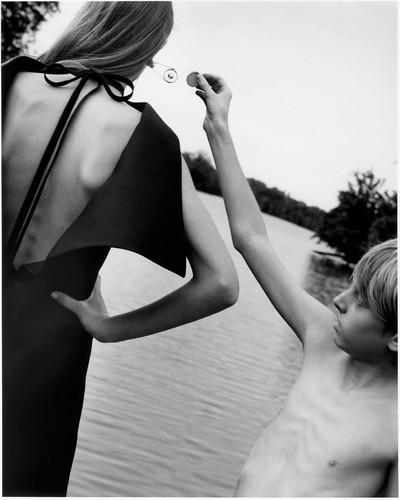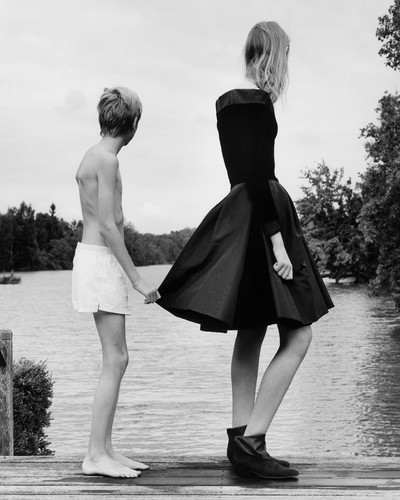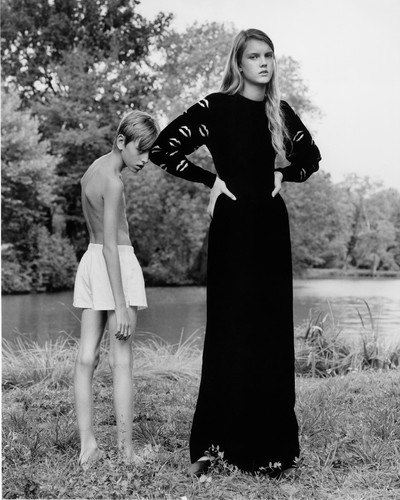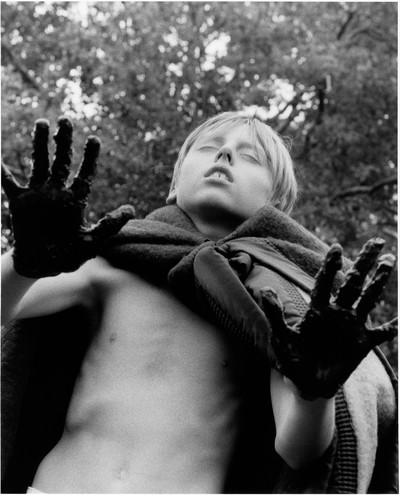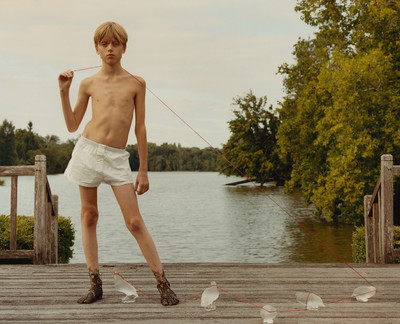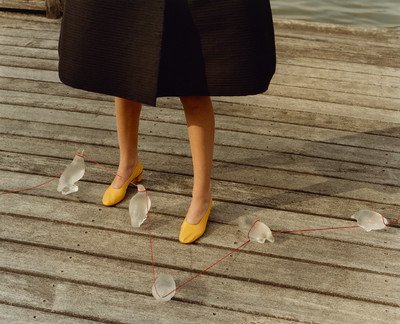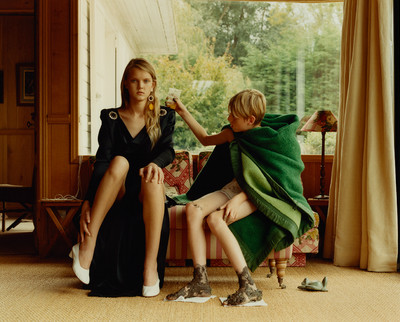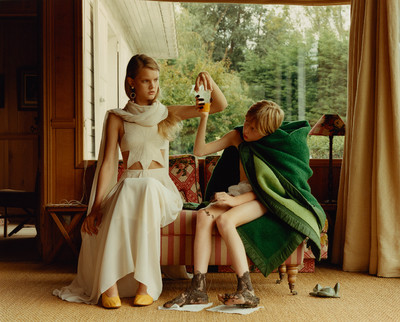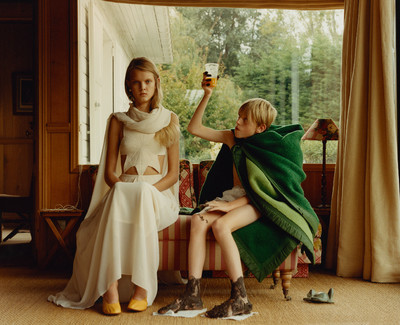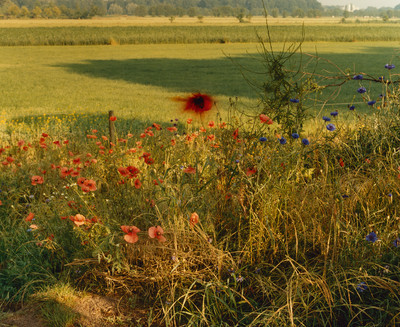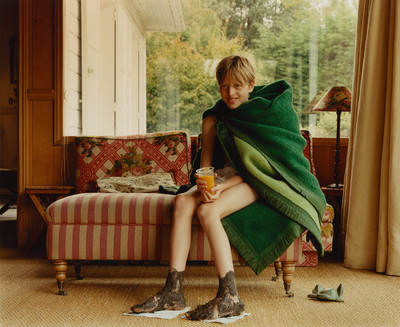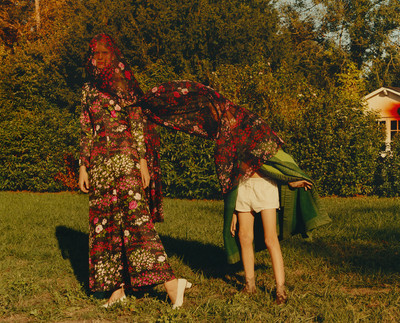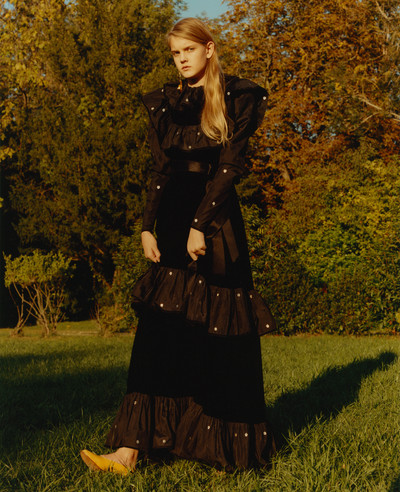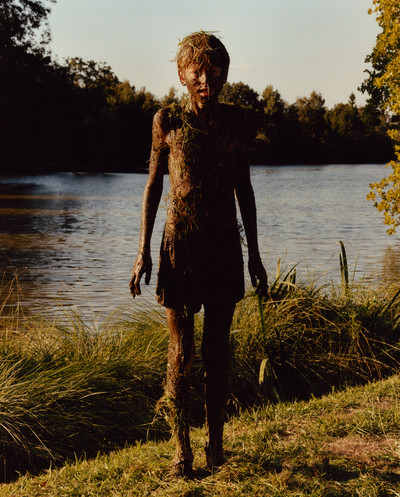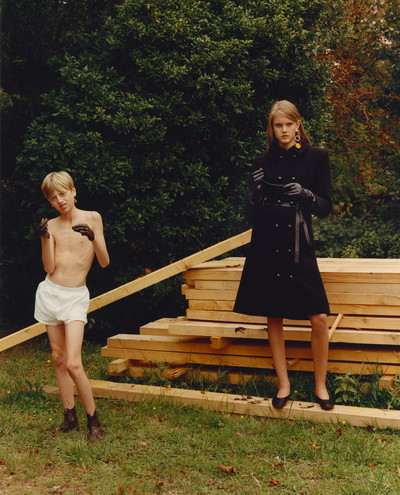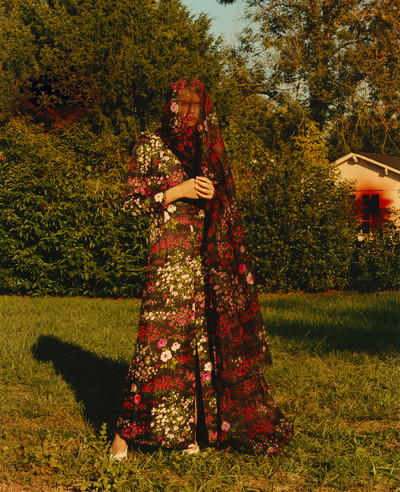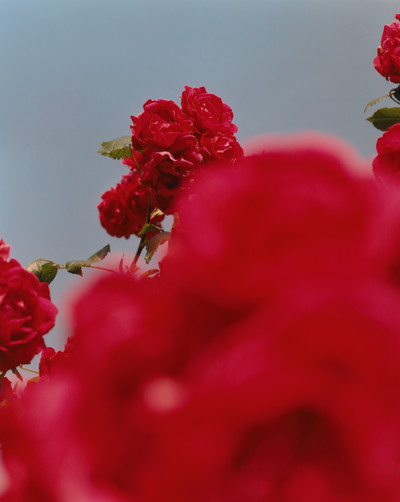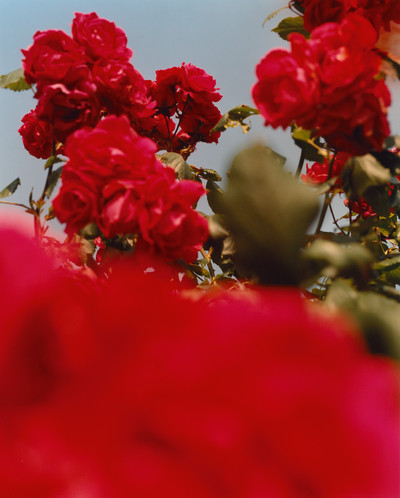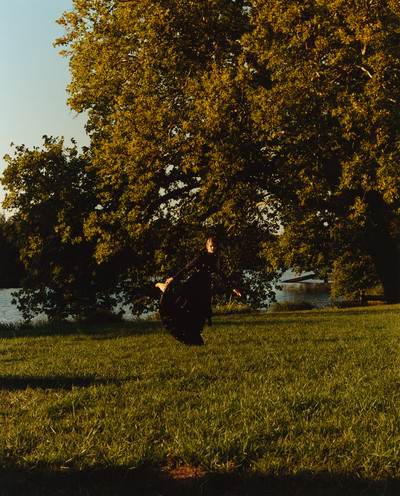Hubert de Givenchy on the childhood dreams and occasional disappointments of his life in fashion.
By Hans Ulrich Obrist
Illustration by François Berthoud
Photographs by Jamie Hawkesworth Styling by Marie-Amélie Sauvé
Hubert de Givenchy on the childhood dreams and occasional disappointments of his life in fashion.
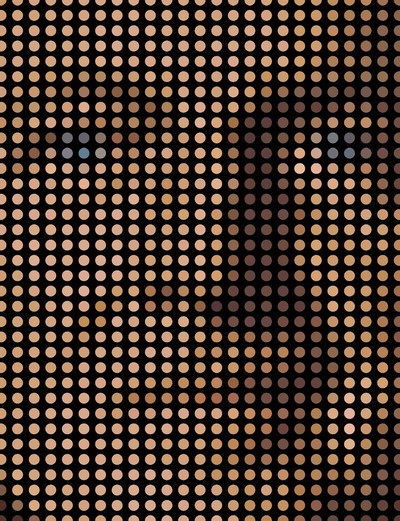
The Hubert de Givenchy story is a tale of talent and names. His own, firstly: Comte Hubert James Taffin de Givenchy, born into an aristocratic family in 1927. Followed by others: Jacques Fath and Robert Piguet, couture giants he almost immediately began to work for when he moved to Paris aged 17. Then Lucien Lelong, with whom he learned his trade alongside the then-unknown Christian Dior and Pierre Balmain. And Elsa Schiaparelli, who hired him as her first assistant and creative director of her ready-to-wear line. But back then Hubert de Givenchy was in a hurry to make a name for himself, and in 1952, aged just 24, he opened his own label and first store at 8 Rue Alfred de Vigny, Paris, a beacon of daring in a neighbourhood of bourgeois respectability.
His innovative approach, immediately seen in his ‘Separates’ collection of easy-to-wear skirts and blouses, soon made his house’s reputation and attracted new names to his store. Like not-quite-princesses (Wallis Simpson), soon-to-be princesses (Grace Kelly), and the woman Givenchy considered nobility itself and who would become his friend and muse for 40 years: Audrey Hepburn. ‘With her,’ he said recently, ‘work became an act of joy.’ And that sheer pleasure produced a remarkable collection of clothing over the years, including that little black dress worn by Hepburn in Breakfast at Tiffany’s – a dress that became an icon.
Then there was the pioneering work, such as the first ever luxury ready-to-wear line (Givenchy Université in 1954) and new perfumes (L’Interdit with Hepburn as its face, launched in 1957). If, as the decades went by, he put his name on menswear, accessories and even cars (the Lincoln Mark V Givenchy), it was never for simply commercial reasons but rather as a way to support his first and real love: haute couture. Because in the 43 years Hubert de Givenchy spent making women sublime in all those beautiful, personalized clothes, he never forgot the fashion essentials he had learned from his mentor, Cristóbal Balenciaga: the sheer power of quiet elegance, the sensual poetry of the pure line, and the simple, yet wonderful romance to be found in dressing up.
Since retiring from fashion in 1995, Hubert de Givenchy has largely kept out of the public eye, preferring to spend time at his hôtel particulier on the Rive Gauche and his country estate, Château Le Jonchet, two hours southwest of Paris – from where he told us about his dreams, drawing and why fashion is not what it was.
‘It was just after the war. Entering the world of fashion was another way of trying to forget the difficult years that we’d been through.’
Hans Ulrich Obrist: Which designers and artists influenced you?
Hubert de Givenchy: I must say Cristóbal Balenciaga.
What triggered your desire to become a designer? Did you have the ambition to be a designer when you attended the École des Beaux-Arts?
Yes, I wanted to learn how to draw. My ambition was to become an assistant in a couture house and to become a couturier myself.
What was your relationship with fashion in your youth?
I admired the work of Balenciaga and of course that of other couturiers. I was already very selective.
When you began designing what was the environment and how did that environment inspire you?
It was just after the war. There was no environment; it was another way of looking at things and trying to forget the difficult years that we had been through. Entering the world of fashion certainly brought great joy into my life and work.
You mention you were touched by the work of Cristóbal Balenciaga and you’ve said that he was your inspiration. Why did his work resonate with you? What did you learn from him?
Everything. His exceptional work, his extraordinary career, his creativity, his values and above all, his elegance. When I first met him, I was influenced by his self-belief, his refusal to cheat, his simplicity and his honesty. It’s true that his work really resonated with me. I was in awe of him. I was fascinated by his meticulousness. He knew how to do everything – cut a dress, assemble it from a pattern. He had worked in London and elsewhere, and had forged his own vision of fashion through which he was able to express his creativity. He allowed me to prove myself and to develop my own ideas and creativity.
You’re a collector of art and sculpture. Can you talk a bit about your collections?
I don’t like using the word ‘collector’. I like beautiful things like a lot of other people and I’ve had the opportunity of acquiring some sculptures.
Of all the great personalities that you met, who are the people – aside from Cristóbal Balenciaga – who left the greatest impression?
My mother and Audrey Hepburn.
Your creations are so often associated with Audrey Hepburn, as well as Jackie Kennedy. Please could you tell us about your first meeting with them and describe your experiences designing clothes for them?
Before meeting Audrey Hepburn, I met Mrs. Kennedy. She loved what I was doing and she trusted me. When she became the First Lady of the United States, her feelings remained unchanged and we often worked together. Later, I had the great fortune to meet Audrey. At the time, she had a major film career and not only required dresses for herself, but also for the screen, which demanded a lot more creativity. On the other hand, Mrs. Kennedy simply picked out dresses from the collection. It was an immense pleasure to work with these extraordinary personalities and I had different experiences working with each of these legendary women.
As a designer, did you have any rules? What was important to you?
To do my job and strive to do my best: something that I learned from my mother. All my life I have tried to forge my own path and follow it.
You used to sketch. Do you still sketch today?
Yes. I learned to draw and I had a reputation for having ‘un bon coup de crayon’. I always draw when I have the desire to or when I feel inspired.
Of all your designs, which are you most proud of?
That is not an easy question for me to answer. The only thing I’m proud of is to have pursued and realized my childhood dream for many years.
‘When I first met Cristóbal Balenciaga, I was in awe of his self-belief, his refusal to cheat, his simplicity, his honesty, and above all, his elegance.’
Do you have any unrealized projects?
Of course, like everyone else.
Do you still follow fashion now?
No, I no longer look at fashion. The world is a very different place now. I sometimes ask myself, ‘Has elegance disappeared? Is there no longer any direction in contemporary fashion?’ It all makes very little sense to me.
Is fashion a young person’s game? Or is it possible to continue designing all one’s life?
If you are passionate about fashion then it is a wonderful profession that can bring you much satisfaction and, of course, occasional disappointments. The ability of the designer to create his life according to his desire never changes.
Do you stay in contact with many people in contemporary fashion? If so, what do you ask them about the industry?
No, unfortunately most fashion designers that I had the honour of meeting are no longer with us: Madame Grès, Monsieur Fath, Christian Dior, Cristóbal Balenciaga, Yves Saint Laurent.
Models: Mad Manning at The Society and Frankie Akhurst at CK Casting.
Hair: Tomohiro Ohasi c/o Management + Artists using Bumble and bumble.
Make-up: Christine Corbel c/o Management + Artists using M.A.C.
Manicure: Laura Forget c/o Artlist.
Set Design: Sylvain Cabouat c/o Michele Filomeno.
Seamstress: Carole Savaton.
Photo Assistants: Edd Horder and Tex Bishop. Styling Assistants: Rae Boxer, Marie-Valentine Girbal, Angelo DeSanto, Fanny Ourevitch and Pia Abbar. Hair Assistant: Sayaka Otama. Make-up Assistant: Anne Amerighi.
Set-design Assistants: Emmanuel Vantillard, Aurore Storny and Arthur Braillon. Production by Laura Holmes Production.
Shoes by Arche and Martiniano. Gloves by Portolano.
Earrings (worn attached) by Belmacz. Boxers by YUASA.
